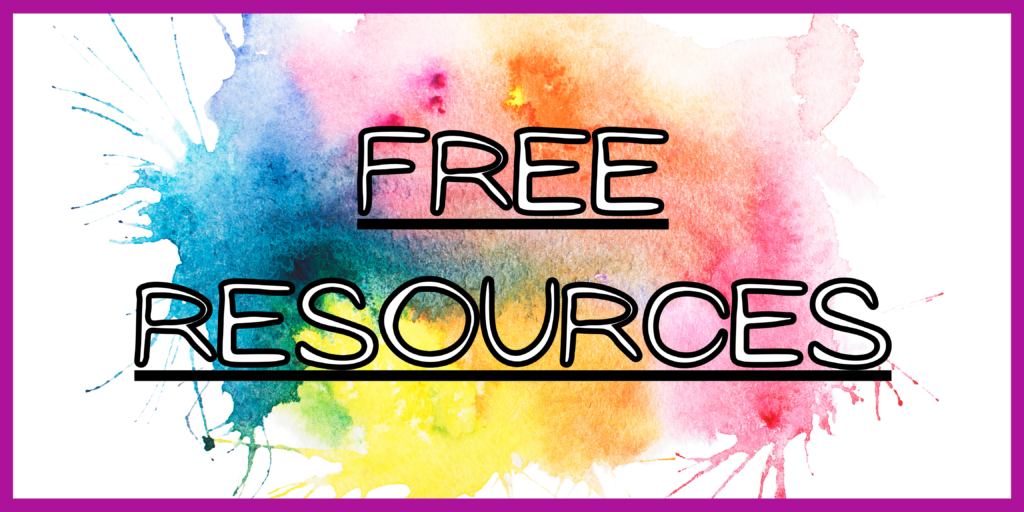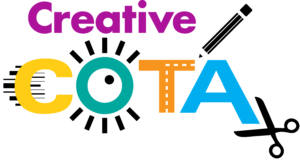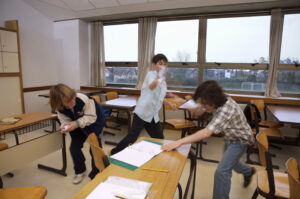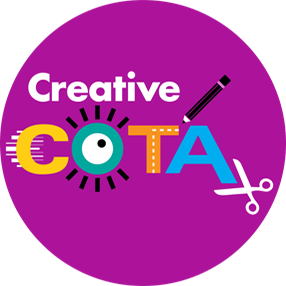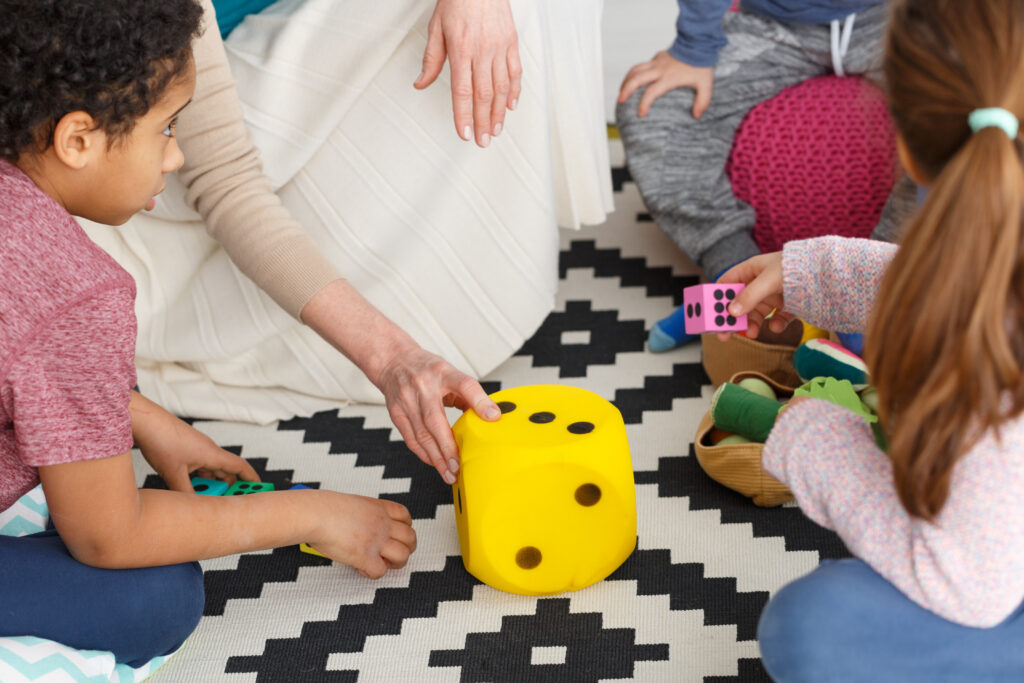
(This post contains affiliate links. If you use a link and make a purchase, I will receive a small fee at no cost to you.)
Dice activities offer dynamic opportunities for engagement, skill-building, and fun both in the classroom and during occupational therapy sessions. Incorporating dice into educational games not only reinforces academic concepts but also fosters essential hand-eye coordination skills crucial for children’s development. Let’s explore innovative ways to leverage dice in the classroom and therapy sessions, along with a list of 10 exciting dice games for kids.
Benefits of Using Dice for Hand-Eye Skills:
- Fine Motor Skills: Rolling dice involves grasping, shaking, and releasing the dice, which strengthens hand muscles and enhances fine motor control.
- Hand-Eye Coordination: Watching and tracking the movement of dice as they roll and land on a surface improves hand-eye coordination and visual tracking abilities.
- Bilateral Coordination: Using both hands to hold and manipulate the dice promotes bilateral coordination, essential for tasks like writing, drawing, and self-care activities.
- Visual Perception: Identifying numbers and patterns on dice enhances visual perception skills, aiding in number recognition and spatial awareness.
Classroom and Therapy Session Integration:
- Mathematics Skills Reinforcement: Incorporate dice into math games for practicing addition, subtraction, multiplication, and division. Roll two dice and add or multiply the numbers together for math practice. Consider a variety of sizes and styles of dice.
- Literacy Enhancement: Use dice with letters or sight words written on them for spelling and word recognition activities. Students roll the dice and form words using the letters rolled.
- Storytelling and Narrative Building: Roll a storytelling dice with different story elements (characters, settings, problems, etc.) to inspire creative storytelling and narrative-building exercises.
- Roll a Story: Handwriting activities incorporating dice.
- Roll and Draw: Incorporating visual motor skills with dice use.
- Probability and Statistics Exploration: Introduce concepts of probability and statistics by rolling dice and recording outcomes. Students can analyze the frequency of different numbers appearing.
- Physical Activity Integration: Create movement-based games where students perform exercises corresponding to the number rolled on the dice. For example, rolling a six might mean six jumping jacks.
Check out my resources that incorporate the use of dice. Including several in my Free Resource Library.

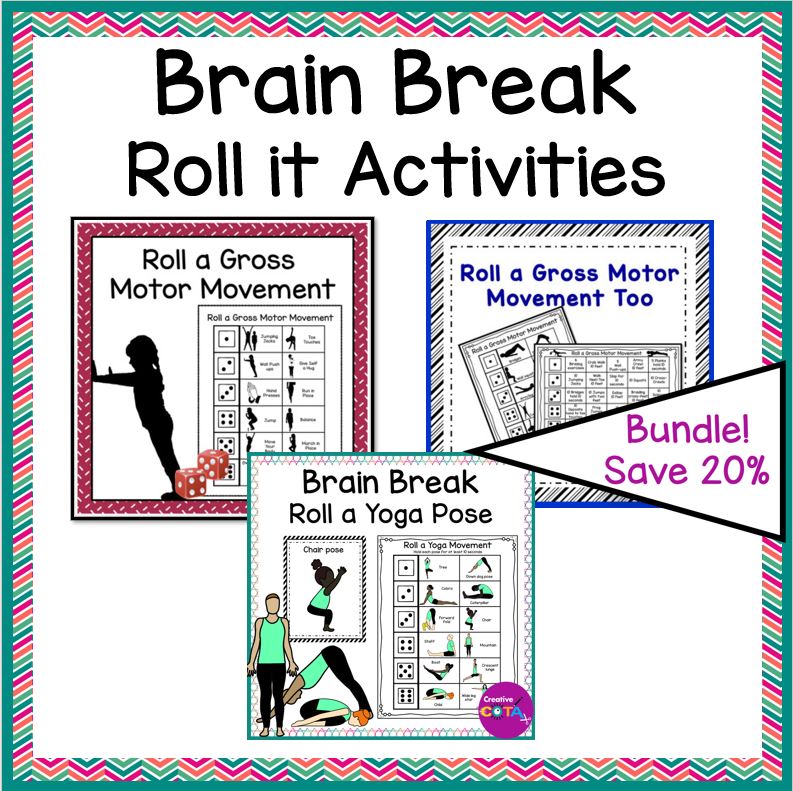
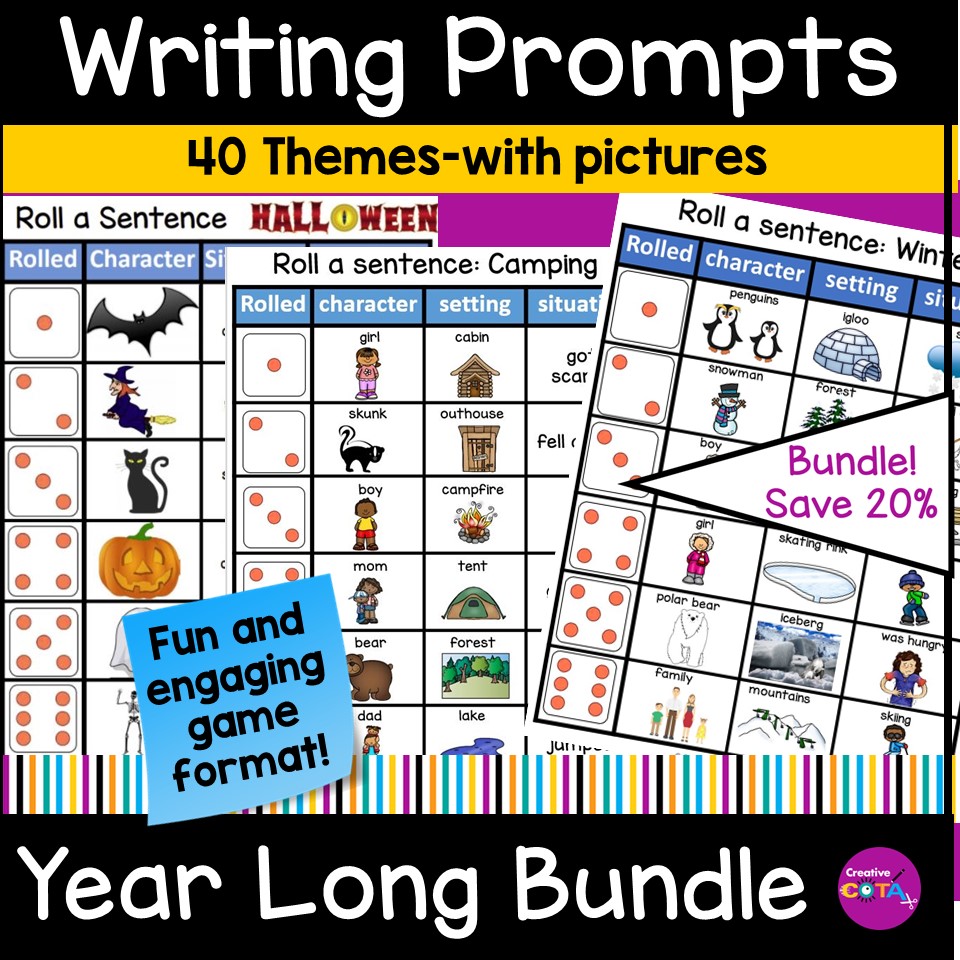
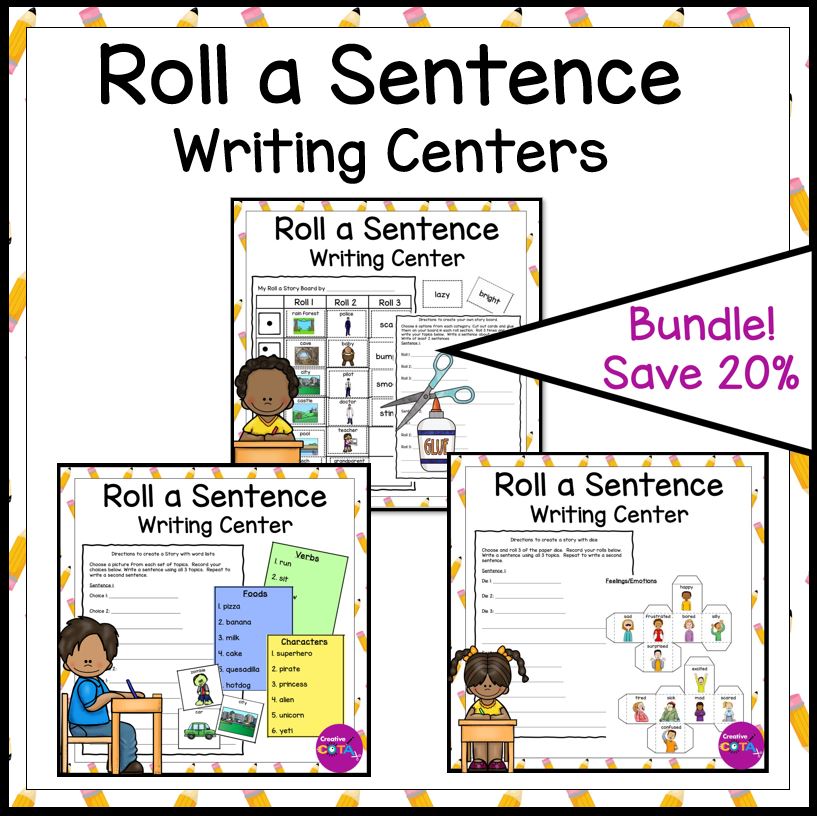
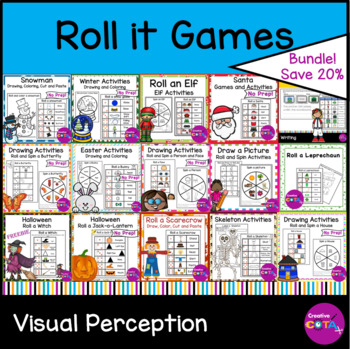
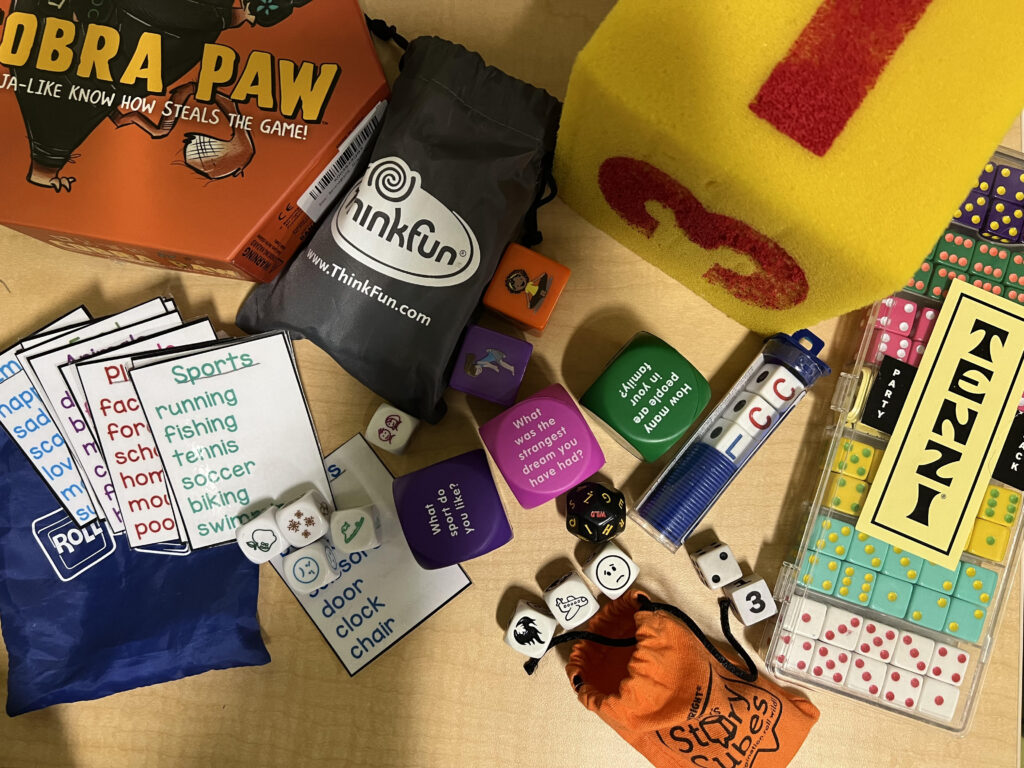
Dice Games for Kids: These are all in my therapy cart!
- Tenzi: A fast-paced dice game where players race to roll a set of dice to match a chosen number.
- Yahtzee: Players roll dice to achieve specific combinations, aiming for the highest score possible across multiple rounds.
- Bunco: A social dice game typically played in large groups, where players roll dice to score points by matching numbers.
- Farkle: Players roll dice to accumulate points by achieving specific combinations while strategically deciding whether to continue rolling or bank their points.
- Cobra Paw: Ninja-like reflexes, sharp recognition skills, and mental fortitude steals the game in this dice rolling and tile-snatching challenge known as Cobra Paw!
- Liar’s Dice: A bluffing game where players roll dice in secret and bid on the total number of dice showing a certain value, with the goal of outbidding opponents without revealing the truth.
- Left Center Right (LCR): A simple and fast-paced dice game where players roll dice to determine whether to pass chips to the left, right, or center based on the results.
- Qwixx: A strategic dice game where players roll colored dice to mark off numbers on their score sheet, aiming to achieve the highest score.
- Roll For It!: Players roll dice to match specific combinations shown on cards, aiming to claim cards and earn points.
- Gross motor dice: Keep your kids entertained with these versatile Fitness Dice. Ideal for both kids outdoor play equipment and indoor games, they feature colorful designs with animal illustrations, movement words, and numbers.
- Conversation dice: Great writing prompts.
- Zombie Dice: A fun and fast-paced game where players take on the role of zombies rolling dice to eat brains while avoiding shotgun blasts. My family loves this one, but it is not appropriate for school.
These games provide exciting opportunities for children to practice math skills, strategic thinking, and social interaction while having fun with dice-based gameplay.
Integrating dice activities and games into the classroom and occupational therapy sessions offers multifaceted benefits for children’s development. From enhancing academic skills to fostering hand-eye coordination and fine motor control, dice-based activities provide engaging and effective learning experiences for children of all ages and abilities. Explore the endless possibilities of dice games to ignite creativity, promote skill-building, and make learning a memorable adventure!
About the Author
I am a Certified Occupational Therapy Assistant (COTA) and have been working in a public school system for more than 25 years. My resources can be found on TPT, BOOM Learning, Made by Teachers, Classful, and Your Therapy Source. I appreciate your interest wherever you wish to shop.
My mission is to help you find creative ideas to incorporate fine motor, visual perception, gross motor, and social-emotional learning into your lessons.
I hope you consider signing up for my Free Resource Library with your Email. I send out emails about once a week and share resources, tips, and planning ideas for your classroom or occupational therapy needs. Hopefully, these help your students work on building their skills in a fun and engaging way.
